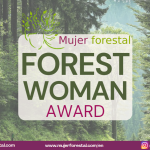Indigenous Women Defending Life and Forests
The Amazon, often called the lungs of the planet, is the largest tropical forest in the world. It covers more than 6.7 million km², spreading across nine South American countries. Its role is crucial: every year, it absorbs around 1 billion tons of CO₂ (Global Carbon Project, 2023), regulates continental water cycles, and hosts 10% of the world’s biodiversity (WWF, 2022).
Yet this vital ecosystem is in danger. Over the past decades, the Amazon has lost more than 17% of its forest cover (RAISG, 2022). Deforestation, illegal mining, agricultural expansion, and climate change threaten its balance. In response, Indigenous women have emerged as leaders and guardians of the territory, standing at the forefront of environmental and cultural defense.
The Role of Women in the Amazon
Far from being invisible figures, Indigenous women play a pivotal role in protecting the forest:
- Defenders of territory: They organize mobilizations, lead legal and community processes against deforestation and illegal resource extraction.
- Keepers of ancestral knowledge: They safeguard wisdom about medicinal plants, sustainable farming cycles, and spirituality connected to the forest.
- Community leaders: They promote environmental education, food security, and strengthen local economies.
Stories of Resistance
Some women have become international references:
- Sonia Guajajara (Brazil): Indigenous activist and current Minister of Indigenous Peoples in Brazil. Her work has highlighted the impacts of mining and deforestation on Amazonian communities.
- Patricia Gualinga (Ecuador): Leader of the Kichwa people of Sarayaku, recognized for her defense against oil projects and her role in the movement Amazonian Women for Life.
- Nemonte Nenquimo (Ecuador): Cofounder of the Ceibo Alliance and Goldman Environmental Prize 2020 winner, she led the historic lawsuit that halted oil drilling in Waorani territory.
These women show us that defending the Amazon is also a fight for social justice, gender equality, and human rights.
Why Does Their Struggle Matter?
The loss of Amazonian forests goes beyond the disappearance of species or the release of carbon. It directly impacts the communities that depend on them.
- Global climate: The Amazon regulates rainfall across South America and stabilizes the global climate.
- Biodiversity: It harbors more than 40,000 plant species, 1,300 bird species, and hundreds of Indigenous peoples.
- Climate justice: Indigenous women, although among the most affected by climate change, are the least responsible for it. Their leadership is essential for building a sustainable future.
A Call to Action
Indigenous Amazonian women are more than local leaders: they are guardians of life itself. Their resistance is also Earth’s resistance against the climate crisis.
Supporting their struggles means:
- Recognizing their territorial rights.
- Amplifying their stories and voices.
- Backing conservation and restoration initiatives led by Indigenous communities.
The Amazon is our shared legacy. Protecting it means securing the future of the planet.





[…] English Version […]